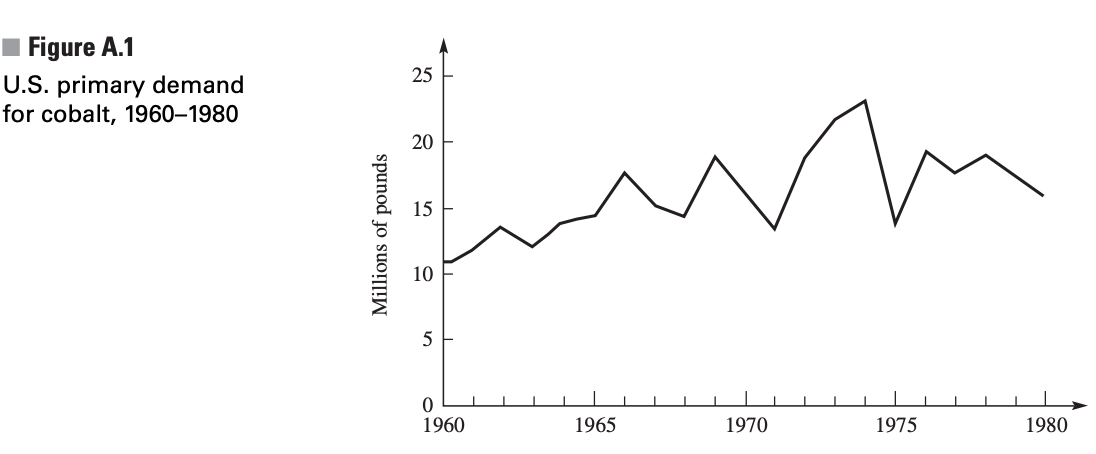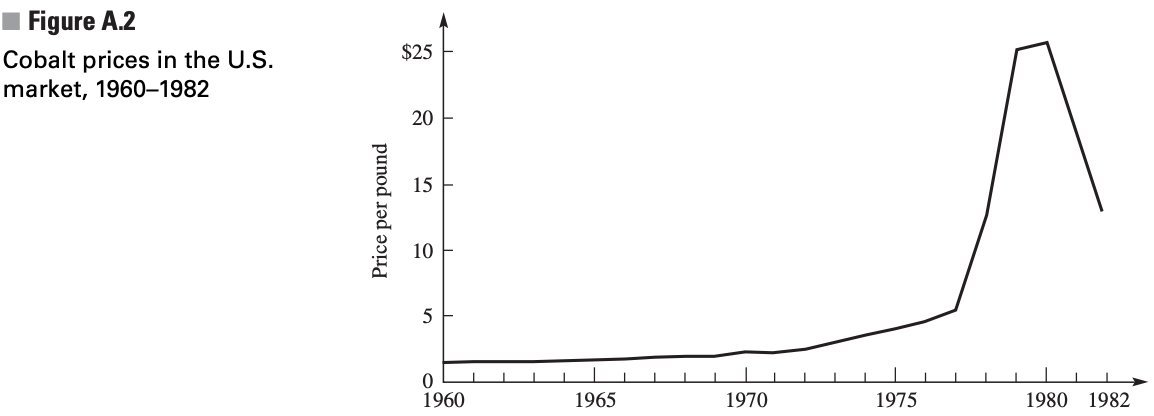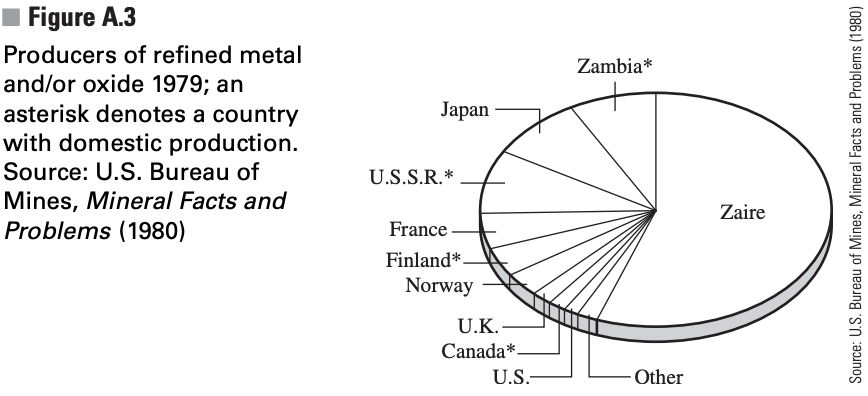1985 MCM B: Strategic Reserve Management
Cobalt, which is not produced in the US, is essential to a number of industries. (Defense accounted for 17% of the cobalt production in 1979.) Most cobalt comes from central Africa, a politically unstable region. The Strategic and Critical Materials Stockpiling Act of 1946 requires a cobalt reserve that will carry the US through a three-year war. The government built up a stockpile in the 1950s, sold most of it off in the early 1970s, and then decided to build it up again in the late 1970s, with a stockpile goal of 85.4 million pounds. About half of this stockpile had been acquired by 1982.
Build a mathematical model for managing a stockpile of the strategic metal cobalt. You will need to consider such questions as:
-
How big should the stockpile be?
-
At what rate should it be acquired?
-
What is a reasonable price to pay for the metal?
You will also want to consider such questions as:
-
At what point should the stockpile be drawn down?
-
At what rate should it be drawn down?
-
At what price is it reasonable to sell the metal?
-
How should it be allocated?
Useful Information on Cobalt
The government has projected a need of 25 million pounds of cobalt in 1985.
The U.S. has about 100 million pounds of proven cobalt deposits. Production becomes economically feasible when the price reaches $22/lb (as occurred in 1981). It takes four years to get operations rolling, and then 6 million pounds per year can be produced.
In 1980, 1.2 million pounds of cobalt were recycled, 7% of total consumption.
Please see Figures below, whose source is Mineral Facts and Problems, United States Bureau of Mines (Washington, DC: Government Printing Office, 1980).



